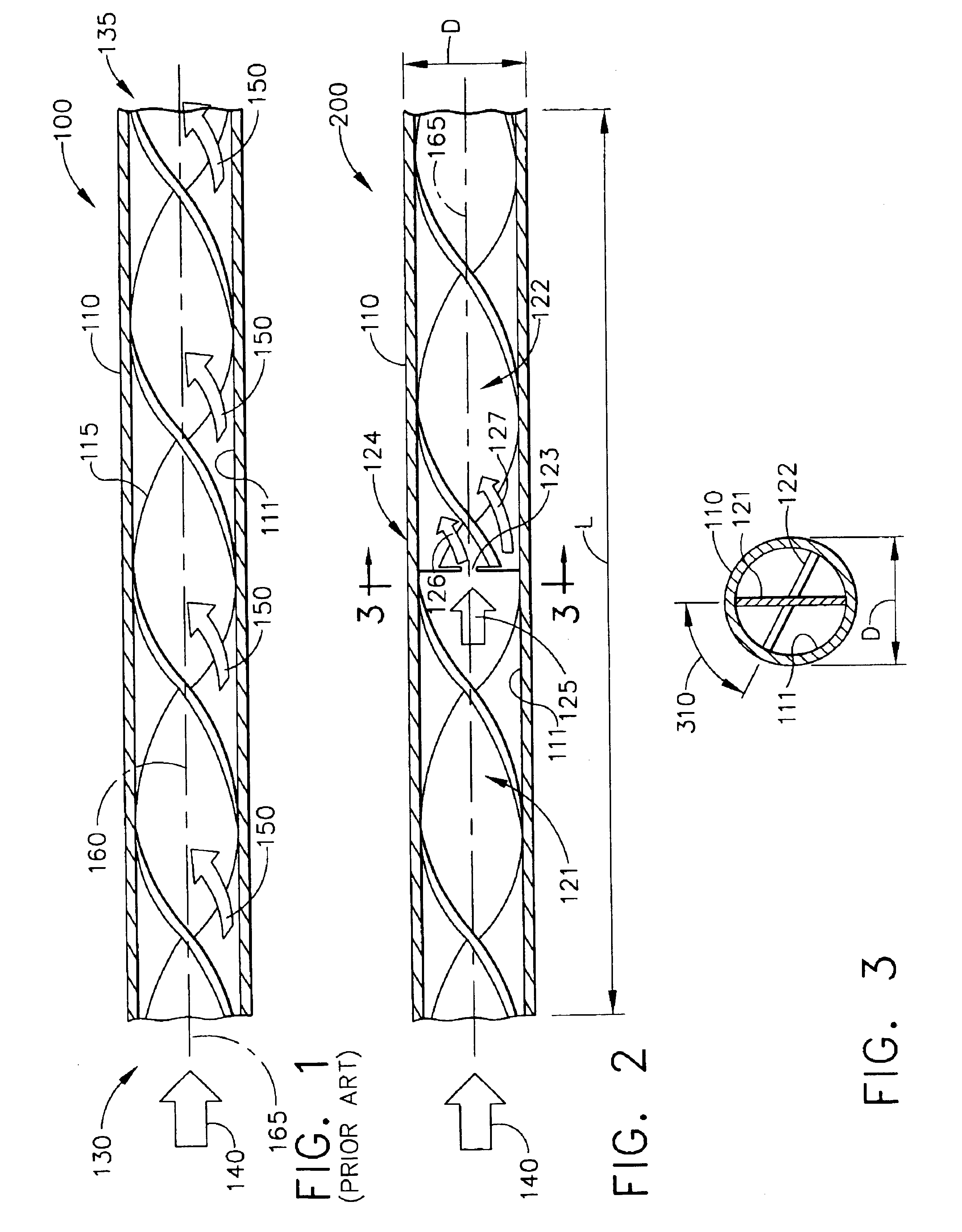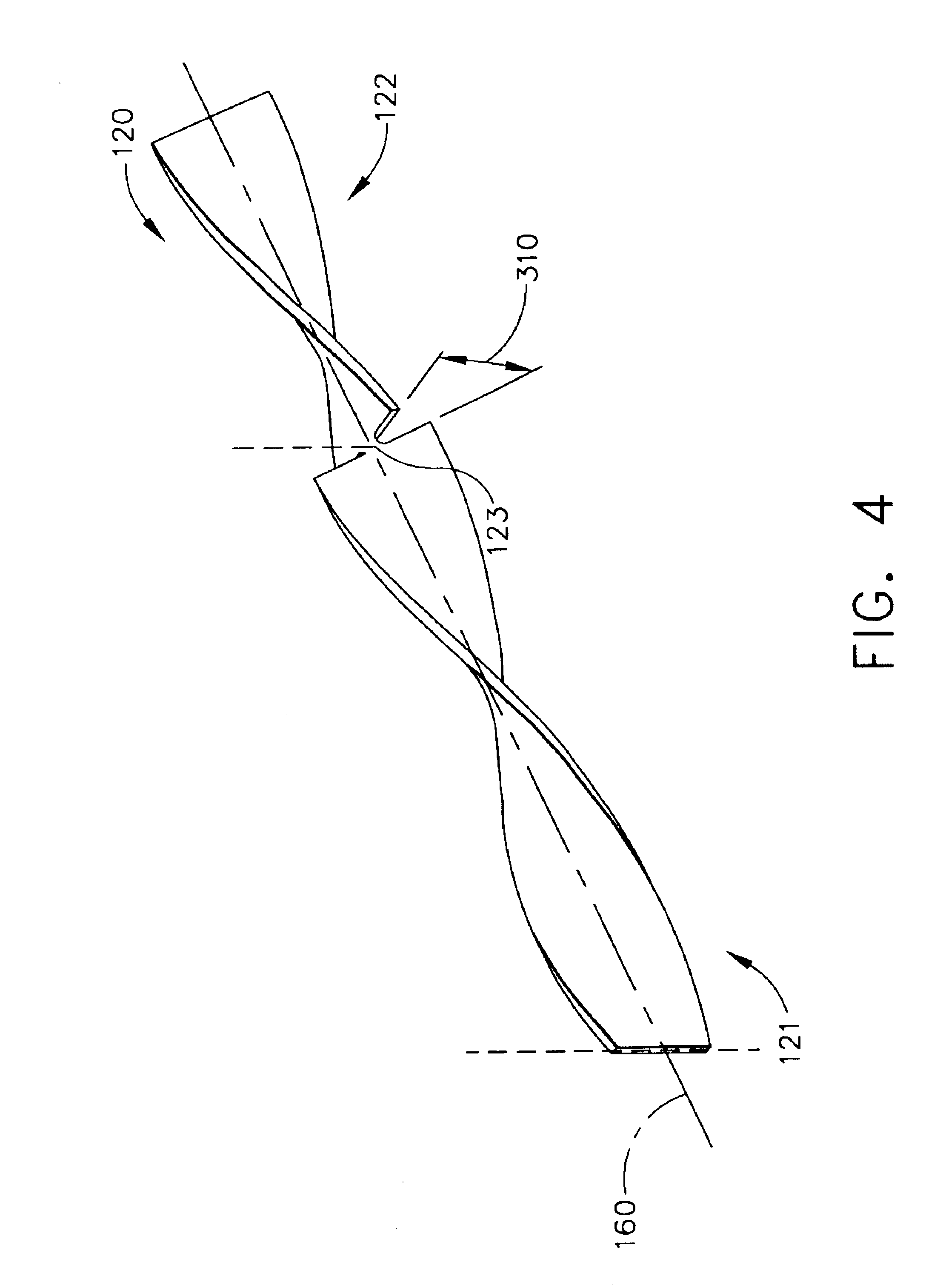Tubular catalytic aircraft precooler
a technology of catalytic aircraft and precooler, which is applied in the direction of heat exchange apparatus safety devices, lighting and heating devices, and separation processes, etc., can solve problems such as affecting laminar flow, and achieve the effect of enhancing mass transfer and increasing interaction of catalytic coatings
- Summary
- Abstract
- Description
- Claims
- Application Information
AI Technical Summary
Benefits of technology
Problems solved by technology
Method used
Image
Examples
example i
[0040]A segmented turbulator was made with a stainless steel strip with 0.2″ in width 12″ long and 0.0025″ thick. Eight segments each having a length of 1.5″ were formed. The twist angle a within each segment was 90° while the offset angle between segments was also 90°. The segmented turbulator was then inserted into a thin wall, stainless steel tube with length of 12″, to form Tube A according to one embodiment of the tube assembly. Separately, a similar tube was dimpled by axial compression to a depth of 0.04″ to form sets of two opposed dimples along the length of the tube. Eight sets of dimples were formed with linear separation of 1.5″ between adjacent sets, to form Tube B according to another embodiment of the tube assembly. Finally, another tube 12″ long and having no modification was used as a reference, to form Tube C. Tubes A, B, and C were washed by industrial detergent solution, followed by drying in ambient air.
EXAMPLE II
[0041]An Al2O3 slurry was made by mixing 15% Boeh...
example ii
Catalytic Ozone Destruction Test
[0042]Catalyzed tubes A, B, and C prepared according to Example II were mounted separately inside of the reactor of a test bed in which an air flow containing ozone with concentration of 2.4 ppm was directed towards the entry end of the catalyzed tubes. The flow rate was maintained at 14 standard liter / min while the reactor temperature was raised from ambient to 600° F. Simultaneously, the ozone concentrations upstream and downstream of the reactor were measured by using two ozone monitors. The level of conversion, calculated as the ozone concentration reduction at the exit ends of the tube assemblies over that of the respective entry ends, was seen as a function of the reactor temperature and plotted in graph 800 shown in FIG. 8. As can be seen in graph 800, the plot for Tube A 810 had the best ozone conversion efficiency (>90%) through the entire operating temperature range. The plot for tube B 820 had second best ozone conversion efficiency in the ...
example iv
[0043]The catalyst slurry was prepared by mixing 30 wt. % of Hopealite fine powder (Carulite 400, Carus Chemical Company), 40% SR 125 synthetic silicone resin (GE Silicones) balanced with toluene. The mixture was then ball milled for two hours before further dilution by additional toluene to form a slurry with viscosity of 40 centipose. The slurry was then used to washcoat the 12″ tubes with the same method used in Example II, followed by drying, curing and calcination at 400° C. for two hours in dry air flow. The ozone destruction efficiency of the tube at different temperatures was tested with the test bed described in Example III. The percentage of ozone conversion as a function of increasing temperature was plotted on graph 900 as shown in FIG. 9. Excellent conversion efficiency was observed.
PUM
| Property | Measurement | Unit |
|---|---|---|
| offset angle | aaaaa | aaaaa |
| offset angle | aaaaa | aaaaa |
| temperature | aaaaa | aaaaa |
Abstract
Description
Claims
Application Information
 Login to View More
Login to View More - R&D
- Intellectual Property
- Life Sciences
- Materials
- Tech Scout
- Unparalleled Data Quality
- Higher Quality Content
- 60% Fewer Hallucinations
Browse by: Latest US Patents, China's latest patents, Technical Efficacy Thesaurus, Application Domain, Technology Topic, Popular Technical Reports.
© 2025 PatSnap. All rights reserved.Legal|Privacy policy|Modern Slavery Act Transparency Statement|Sitemap|About US| Contact US: help@patsnap.com



